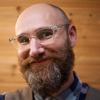What is a Pietist? I’ve been searching for a good answer to this question since my graduate student days when I was studying this remarkable seventeenth-century movement and its subsequent influence. One common perception I found is that a Pietist is simply a Lutheran version of a Puritan. But then, what is a Puritan? We might affix cultural critic H. L. Mencken’s definition of Puritanism to Pietism: the “haunting fear that someone, somewhere, might be happy.” Or we might go in the opposite, appreciative direction, as many of the contemporary Reformed have done: like Puritans, Pietists “were great souls serving a great God. In them clear-headed passion and warm-hearted compassion combined.” In my personal experience among Saxon Lutherans, the Pietist label is as much an epithet as it is a term of affection among Scandinavian Lutherans. So, which is it?
Confessional or Pious? A False Distinction
One common theme in research and popular understanding is that Pietism needs the foil of confessional orthodoxy to make any sense. Among reformational Christians, Lutherans boast the most straightforward definition of what it means to be confessional. Since 1580, Lutherans have had one collection of texts—the Book of Concord—as our lodestar of orthodoxy. It contains the 1530 Augsburg Confession, Luther’s Catechisms, and other texts. Historically, to be a Lutheran meant fidelity to this single set of confessions. To what extent, then, does being a confessional Lutheran oppose being a Pietist?
Those who balk at Christian spirituality and morality see Pietists and Puritans as hard legalists; those who emphasize Christian spirituality and morality often see Pietism (and sometimes even Puritanism) as opposed to the sterile and academic confessional orthodoxy that fossilized Protestantism after the warm faith of the Reformation had cooled. My early research on Pietism ultimately led me to see each of these approaches as a false choice. In studying the “Proto-Pietist” Johann Arndt (1555–1621), what I found most remarkable is his emphasis on the interior life of the Christian while conscientiously remaining an orthodox, confessional Lutheran.
In the narrowest possible sense, a Pietist is one who pays attention to the interior spiritual life. Many would further define Pietism as involving regular small group meetings known as “conventicles,” as well as holding to some form of optimistic eschatology. I focus in this essay on the narrowest, most basic sense, but it’s important to note that none of these things are forbidden in the Book of Concord. And while many Lutherans have painted Lutheran Pietism and the Age of Orthodoxy as opposites, the most outstanding representative of both movements in the seventeenth century might be the same person: Johann Gerhard.
The Life of Gerhard
Johann Gerhard was born in 1582 in Quedlinburg into a family of seven children. His pastor in Quedlinburg was the yet-unknown Johann Arndt. Arndt’s spiritual care for Johann left a profound impression, especially after an illness that almost killed him at fifteen. He swore then that if he survived, he would follow Arndt into the ministry.
Gerhard studied theology at the University of Wittenberg and then at the University of Jena, a hotbed of Lutheran orthodoxy. Around the time of another life-threatening illness in 1603, he remembered his promise and entered the ministry. In 1604, he left Jena for Marburg, where he studied under orthodox stalwart Balthazar Mentzer. When Marburg and the university came under the control of the Calvinists (it was common for the ruling magistrate to determine the confession for the city), Gerhard returned to Jena. While studying there, he was courted both by Arndt, who wanted him to pursue a call in Saxony, and Mentzer, who wanted him to teach at his new university in Giessen. Gerhard chose to stay at Jena, where he earned his doctorate in sacred theology in 1606. The same year, he published Sacred Meditations, perhaps his most popular work, combining deep theological conviction with rich devotional reflection well beyond his twenty-two years.
Two years later, his reputation had grown such that he was called to be the superintendent of Heldburg (basically, a bishop). Duke Johann Casimir promoted Gerhard to the role of general superintendent of the whole region of Saxe-Coburg-Gotha, where he served in administrative roles while occasionally teaching and publishing a church order (a book for worship and discipline). By 1616, Gerhard took up a senior professorship at the University of Jena. Though he often received calls from across Europe to teach or preach, Gerhard stayed at Jena for life.
Most of the next two decades of Gerhard’s ministry paralleled the Thirty Years War. While he attended to the suffering of his congregation, he dealt with sorrows of his own. His most personal and moving correspondence with Arndt surrounds the death of his wife and child from smallpox. Through his time at the university, his life as a churchman and a professor, a believer and an academic, Gerhard held in harmony what later theologians would pitch as opposing forces: confessional orthodoxy and piety—that is, attention to the personal life of faith and devotion.
After Sacred Meditations, he published Manual of Comfort in 1611 and Daily Exercise of Piety in 1612. Gerhard’s desire to provide practical literature to his parishioners is also exemplified in his work Harmony of the Gospels and his contributions to the Weimar Bible—a German-language Bible with Lutheran explanations and notes. In his 1620 tract on the proper study of theology, he includes a proposed course of study, citing Luther’s famous call to the theologian as “praying, meditating, and suffering” and adding his own three requirements: right intentions, sincere piety, and devout prayer. In 1624, Gerhard published School of Piety, whose structure and content echoed Arndt’s famous “Pietist” work True Christianity (completed 1610). Yet throughout these years, Gerhard simultaneously labored to complete his Loci communes, an extensive academic theological work that eventually spanned nine volumes by 1625.
Orthodoxy and Piety in Gerhard
Gerhard’s stature as a giant of Lutheran orthodoxy is beyond question. Robert Preus, a renowned scholar of early modern Lutheranism, considered Gerhard the third great Lutheran theologian after Luther and Martin Chemnitz. Any historically nuanced approach to Pietism (and we might add Puritanism here) must account for Gerhard and other theologians like him who emphasized the necessity of an internal and affective faith—not to the detriment of orthodoxy, but in inseparable union with it. Gerhard calls us to find assurance of faith in Christ alone (outside ourselves). Yet he finds no disconnect in urging a life of faith and devotion that flows from that external reality. Indeed, he focuses on the Lord’s Supper as uniting the external and internal at the heart of the Christian life: in the Supper, Christ’s very body and blood is “given for you” and received into your very body by faith.
Gerhard is a shining example of the refusal to separate thinking and feeling, doctrine and piety, head and heart. While radical Pietists indeed developed distinctives that align more closely with Anabaptists and others outside the confessional reformational mainstream, radical Pietism is a far cry from Christian piety. Gerhard shows us that confessional Christians can (and should) be pious Christians. Piety is not the enemy of orthodoxy.
Footnotes
Douglas Shantz surveys a few historians’ use of the term, from Johannes Wallman distinguishing between a broad and narrow movement to Hartmut Lehmann’s expansive definition that is “broad and flexible enough so that pietism research can unfold as freely and creatively as possible.” In An Introduction to German Pietism: Protestant Renewal at the Dawn of Modern Europe (Baltimore: Johns Hopkins University Press, 2013), 5.
BackJ. I. Packer, A Quest for Godliness: The Puritan Vision of the Christian Life (Wheaton, IL: Crossway, 1990), 22. This is from ch. 2, “Why We Need the Puritans,” which is widely available online.
BackDaniel van Voorhis, Johann Arndt: A Prophet of Lutheran Pietism (Irvine, CA: 1517 Press, 2017)
BackJohannes Wallman, Der Pietismus (Göttingen: Vandenhoeck & Ruprecht, 1990), 26.
BackWhile the Book of Concord says relatively little about eschatology, it does condemn radically optimistic or this-worldly eschatology in the guise of “certain Jewish opinions” that Christians “will take possession of the kingdom of this world, the ungodly being everywhere suppressed.” Theodore G. Tappert, The Book of Concord (Minneapolis: Fortress Press, 1959), 38–39.
BackErdmann Fischer, The Life of Johann Gerhard, trans. Richard Dinda and Elmer Hohle (Malone, TX: Repristination Press, 2000).
BackRobert Preus, The Theology of Post-Reformation Lutheranism (St. Louis, MO: Concordia, 1970), 52.
BackGlen K. Fluegge, “Pastoral Care During the Age of Orthodoxy,” in Christoph Barnbrock, ed., Fides, Confessio and Pietatis (Leipzig: Evangelische Verlagsanstalt GmbH, 2021), 69.
BackPreus, The Theology of Post-Reformation Lutheranism, 52.
Back






